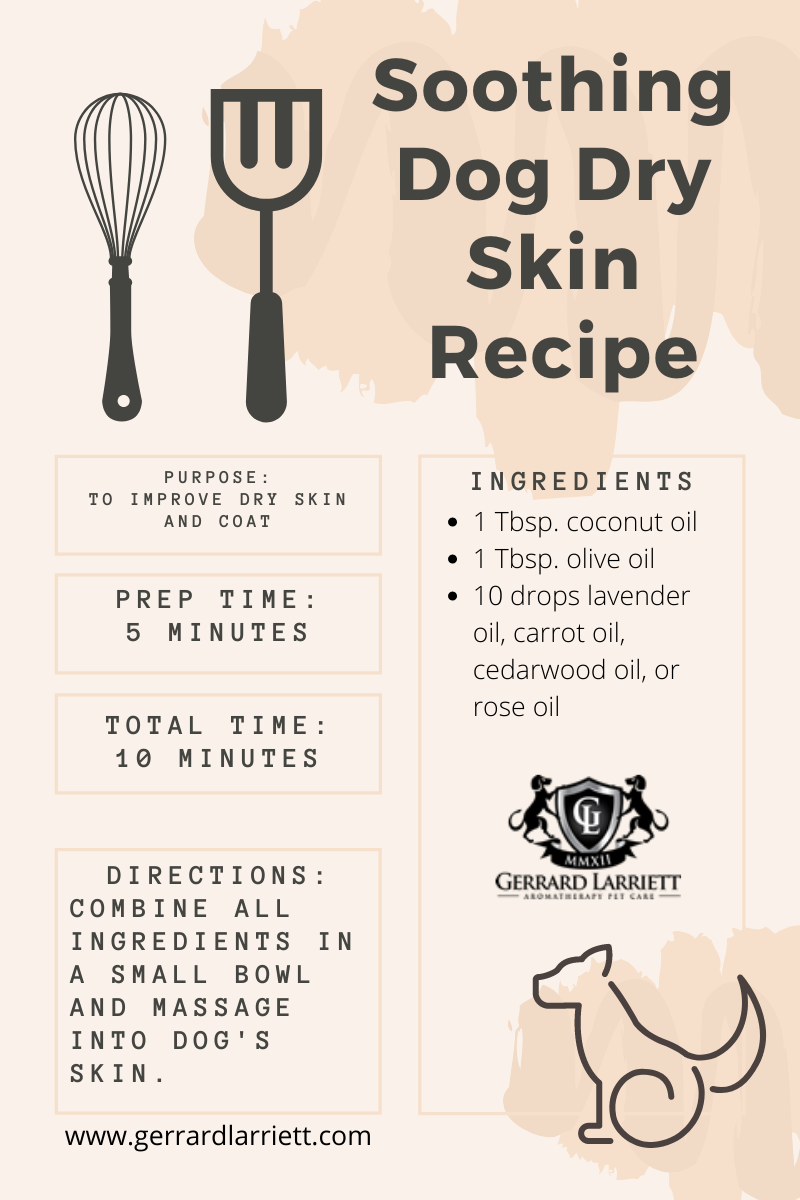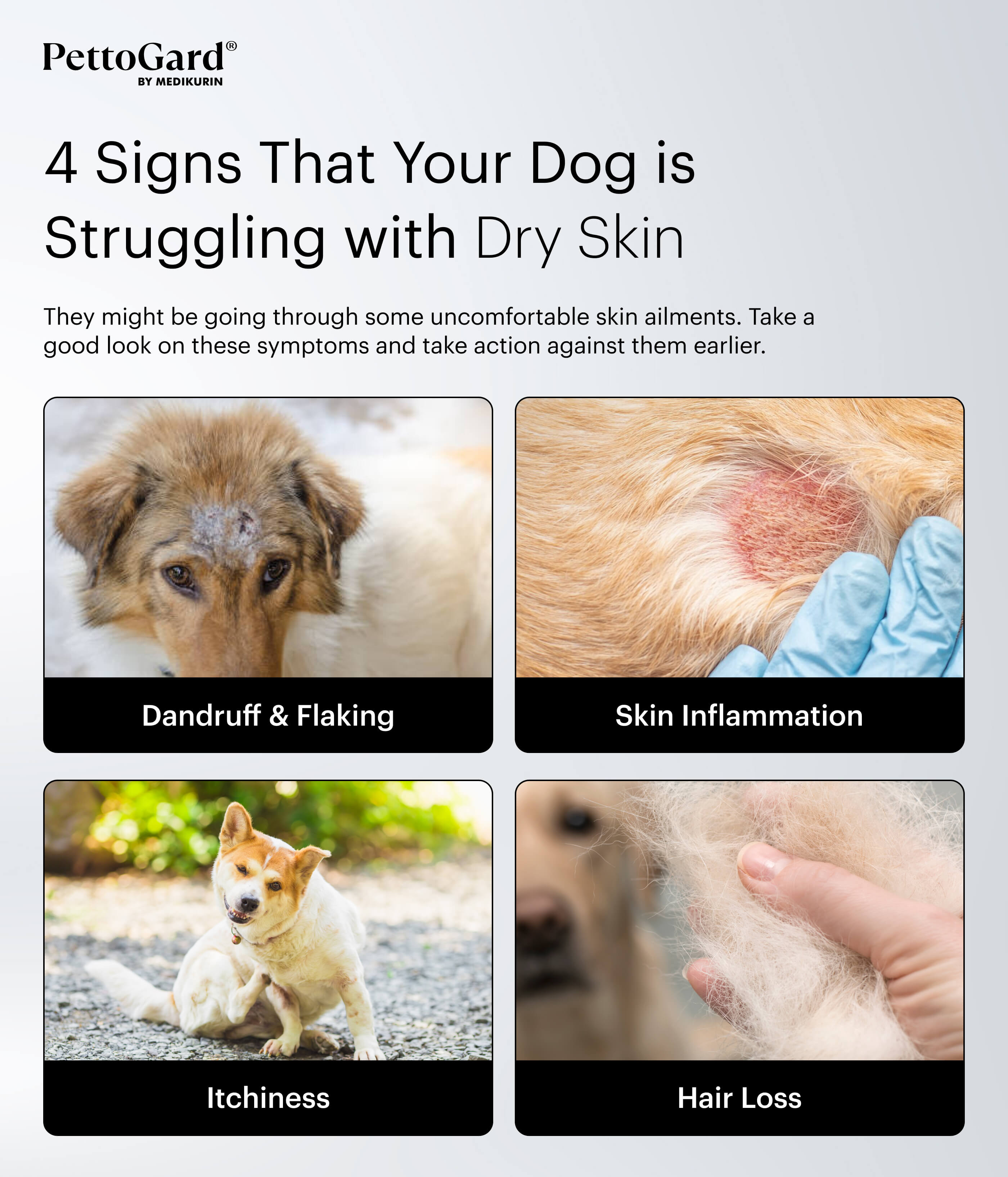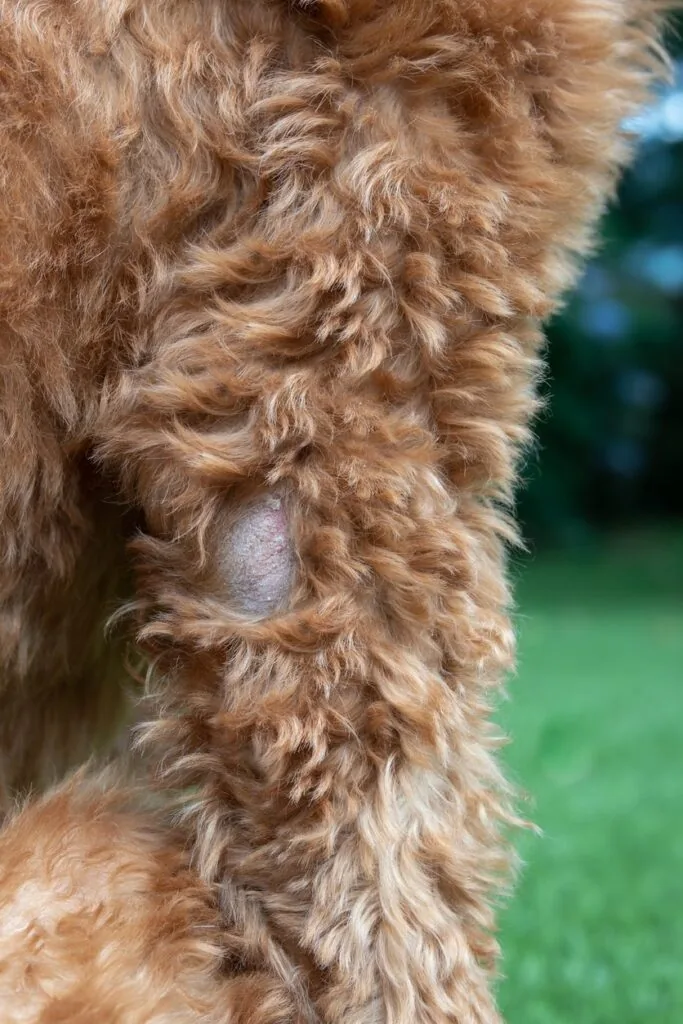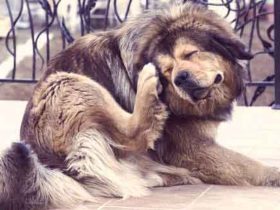To help dry skin on dogs, use a moisturizing shampoo and provide a balanced diet. Consult your vet for proper guidance.
Dry skin on dogs can be uncomfortable and lead to itching and irritation. A moisturizing shampoo specifically formulated for dogs can help alleviate dryness and soothe their skin. Ensuring your dog has a balanced diet rich in essential fatty acids promotes healthy skin and coat.
Regular grooming also plays a crucial role in maintaining skin health by removing dirt and distributing natural oils. It’s essential to consult your veterinarian to rule out underlying health issues and get personalized advice. Proper care and attention can significantly improve your dog’s skin condition and overall well-being.

Credit: www.gerrardlarriett.com
Causes Of Dry Skin In Dogs
Dry skin in dogs is a common issue. It can cause discomfort for your pet. Understanding the causes helps in finding the right solution.
Common Triggers
Several factors can cause dry skin in dogs:
- Allergies: Dogs can be allergic to food, pollen, or dust.
- Weather: Cold weather and low humidity dry out the skin.
- Bathing: Frequent baths strip the skin of natural oils.
- Poor Nutrition: Lack of essential fatty acids affects skin health.
- Parasites: Fleas and ticks can irritate the skin.
Breed-specific Issues
Some breeds are more prone to dry skin. Here are a few examples:
| Breed | Skin Issue |
|---|---|
| Bulldogs | Prone to skin folds and infections. |
| German Shepherds | Often suffer from allergies. |
| Labradors | Can have seborrhea, causing dry and flaky skin. |
| Shih Tzus | May develop dry skin due to their long hair. |
Knowing the cause of dry skin can help treat your dog effectively. Always consult your vet for advice tailored to your pet’s needs.
Recognizing Symptoms
Dry skin on dogs can cause them discomfort and lead to more issues. Knowing the symptoms helps you address the problem early. Here, we explore the visible signs and behavioral changes to look out for.
Visible Signs
Visible signs are easier to spot during grooming or petting. Look for:
- Flaky Skin: White flakes may appear on your dog’s fur.
- Red Patches: Areas of red, irritated skin.
- Crusty Spots: Hard, crusty areas on the skin.
- Hair Loss: Bald spots or thinning fur.
Behavioral Changes
Behavioral changes indicate your dog’s discomfort due to dry skin. Watch for:
- Excessive Scratching: Your dog frequently scratches the same spots.
- Rubbing Against Objects: Your dog rubs against furniture or the ground.
- Licking or Biting: Your dog licks or bites their skin persistently.
- Restlessness: Your dog has trouble settling down or seems agitated.
Recognizing these symptoms early can help prevent further complications. Always consult your vet for a proper diagnosis and treatment plan.
Dietary Solutions
Dry skin on dogs can be troubling. One way to help is through their diet. Dietary solutions can nourish your dog’s skin from the inside out. Below, we explore the essential nutrients and homemade diet options that can help.
Essential Nutrients
Dogs need certain nutrients to maintain healthy skin. Here are some key ones:
- Omega-3 Fatty Acids: These reduce inflammation and keep skin supple.
- Vitamin E: Acts as an antioxidant, protecting skin cells.
- Zinc: Essential for skin repair and overall health.
- Biotin: Helps maintain healthy skin and coat.
Incorporating these nutrients in your dog’s diet can make a big difference. You can find them in fish oil, eggs, and leafy greens.
Homemade Diet Options
Homemade diets offer control over what your dog eats. Here are some simple recipes:
| Recipe | Ingredients | Instructions |
|---|---|---|
| Salmon and Veggie Mix |
|
|
| Chicken and Rice Bowl |
|
|
Remember to consult your vet before making significant changes to your dog’s diet. Proper nutrition can make your dog’s skin healthier and reduce dryness.
Hydration Importance
Dry skin in dogs can be uncomfortable and lead to further health issues. Ensuring proper hydration is crucial for maintaining your dog’s skin health.
Water Intake
Water intake is vital for your dog’s overall health. Dogs need fresh water daily. A rule of thumb is 1 ounce of water per pound of body weight.
Provide a clean bowl of water each day. Keep the water bowl in a place your dog can easily access.
If your dog is active, increase their water intake. Active dogs lose more water through panting and need more to stay hydrated.
Hydration Tips
Here are some hydration tips to keep your dog’s skin healthy:
- Offer water with meals.
- Mix water with their dry food.
- Carry a water bottle during walks.
- Provide ice cubes as treats.
Using these tips can help maintain your dog’s hydration levels. Proper hydration aids in preventing dry skin and promotes overall well-being.
Topical Treatments
Dry skin on dogs can be uncomfortable. Topical treatments provide relief and improve skin health. These treatments are easy to apply and effective.
Natural Oils
Natural oils are a great way to soothe dry skin. They moisturize and nourish the skin.
- Coconut Oil: Coconut oil is rich in fatty acids. It helps to hydrate and heal the skin. Apply a small amount to the affected area.
- Olive Oil: Olive oil is also beneficial. It provides deep moisture and reduces inflammation. Massage it gently onto your dog’s skin.
- Fish Oil: Fish oil is known for its omega-3 fatty acids. These help to improve skin health. Add a few drops to your dog’s skin.
Commercial Products
There are many commercial products designed for dry dog skin. These products are formulated to provide quick relief.
| Product | Description |
|---|---|
| Oatmeal Shampoos | Oatmeal shampoos soothe and moisturize the skin. They are gentle and effective. |
| Aloe Vera Sprays | Aloe vera sprays offer instant relief. They cool and hydrate the skin. |
| Hypoallergenic Lotions | These lotions are great for sensitive skin. They reduce itching and dryness. |
Always consult your vet before trying new treatments. Your dog’s health is important.

Credit: www.doglyness.com
Bathing Practices
Proper bathing practices can help alleviate your dog’s dry skin. It’s important to use the right products and frequency. Read on to discover the best practices.
Shampoo Choices
Choosing the right shampoo is crucial for your dog’s skin health. Always opt for hypoallergenic and moisturizing shampoos. Avoid shampoos with harsh chemicals. These can strip natural oils from your dog’s skin. Look for ingredients like oatmeal, aloe vera, and coconut oil. These help soothe and hydrate dry skin.
Bathing Frequency
Bathing your dog too often can make dry skin worse. Limit baths to once a month. This helps retain natural oils in their skin. If your dog gets dirty frequently, use a damp cloth to clean them. Spot-cleaning can keep them fresh without over-bathing.
| Shampoo Type | Frequency |
|---|---|
| Hypoallergenic Shampoo | Once a month |
| Moisturizing Shampoo | Once a month |
| Harsh Chemical Shampoo | Avoid |
- Hypoallergenic shampoos are safe for sensitive skin.
- Moisturizing shampoos keep the skin hydrated.
- Avoid harsh chemical shampoos to protect natural oils.
- Choose a hypoallergenic shampoo.
- Limit baths to once a month.
- Use a damp cloth for spot-cleaning.
Environmental Adjustments
Helping your dog with dry skin involves several environmental adjustments. Small changes can make a big difference. Below are some tips to create a more comfortable environment for your furry friend.
Humidifiers
Dry air can worsen your dog’s skin condition. Using a humidifier can add moisture to the air. This helps keep your dog’s skin hydrated. Place the humidifier in the room where your dog spends most of its time.
Choose a humidifier that is easy to clean. Regular cleaning prevents mold and bacteria buildup. Here’s a simple table to help you select the right humidifier:
| Type | Benefits |
|---|---|
| Cool Mist | Energy-efficient and safe for pets |
| Warm Mist | Effective but can get hot |
| Ultrasonic | Quiet and easy to maintain |
Bedding Options
Your dog’s bedding plays a crucial role in skin health. Choose bedding made from natural, breathable materials. Cotton and hemp are good options.
Ensure the bedding is clean and dry. Wash the bedding regularly to remove allergens. Here’s a list of bedding tips:
- Opt for hypoallergenic materials
- Avoid synthetic fabrics
- Use washable covers
Consider placing a soft blanket on top. This adds an extra layer of comfort and warmth. Your dog will appreciate the cozy touch.

Credit: medikurin.com
When To See A Vet
Dry skin on dogs can be a minor issue or a sign of something serious. Knowing when to see a vet is crucial for your dog’s health. This section will guide you through the warning signs and possible treatment plans.
Warning Signs
- Constant scratching: If your dog scratches a lot, it’s a red flag.
- Red or inflamed skin: Red patches might indicate an infection.
- Open sores: Sores can get infected and should be checked.
- Hair loss: Losing hair in patches is not normal.
- Bad odor: A foul smell can be a sign of infection.
Treatment Plans
Once you’ve noticed the warning signs, it’s time to consult your vet. Here are some possible treatment plans:
| Treatment | Description |
|---|---|
| Medicated shampoos | Special shampoos can relieve itching and moisturize the skin. |
| Antibiotics | These are needed if there’s a bacterial infection. |
| Topical treatments | Ointments can reduce inflammation and promote healing. |
| Diet changes | A better diet can improve skin health. |
Always follow your vet’s advice for the best results. Early detection and treatment can prevent more serious issues.
Frequently Asked Questions
How Can I Moisturize My Dog’s Dry Skin?
You can moisturize your dog’s dry skin by using a dog-specific moisturizer. Natural remedies like coconut oil can also help.
What Causes Dry Skin On Dogs?
Dry skin on dogs can be caused by environmental factors, allergies, or poor diet. Regular vet check-ups can identify the root cause.
Can Diet Help With A Dog’s Dry Skin?
Yes, a balanced diet rich in omega-3 fatty acids can improve your dog’s skin health. Consult your vet for diet recommendations.
Are There Any Home Remedies For Dry Skin On Dogs?
Yes, oatmeal baths and coconut oil applications can soothe dry skin. Always consult your vet before trying new treatments.
Conclusion
Caring for your dog’s dry skin involves proper grooming and a balanced diet. Use moisturizing shampoos and consult your vet for advice. Consistent care and attention can significantly improve your dog’s skin health. Remember, a happy dog starts with healthy skin.
Prioritize your pet’s well-being for a joyful, itch-free life.








